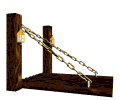Better Than A Mattress: Types of financial institutions where you can do your banking
|
|
|
Most people think all banks are pretty much the same, but this is not true. There are actually  three kinds of "depositary institutions" – or places where you can "do banking." If you consider each kind and compare what each charge for services, you can usually save money by finding the one best for you. three kinds of "depositary institutions" – or places where you can "do banking." If you consider each kind and compare what each charge for services, you can usually save money by finding the one best for you.
First, let’s consider banks. There are private banks for individuals and commercial banks,  which businesses as well as individuals can use. Banks are usually stock corporations whose main job is to make a profit for their stockholders. which businesses as well as individuals can use. Banks are usually stock corporations whose main job is to make a profit for their stockholders.
Banks are chartered by states or the federal government, so they have names like First National Bank of Ohio or Bank of Arizona. All banks offer similar services including checking and saving accounts and loans.
All national banks and some state ones are members of the Federal Reserve System.  The Fed is the central bank of the U.S. and controls the money supply for the entire country. It does this by lending money to banks, but setting limits on the amount of money it lends. The Fed is the central bank of the U.S. and controls the money supply for the entire country. It does this by lending money to banks, but setting limits on the amount of money it lends.
|
The Federal Deposit Insurance Corporation (FDIC) insures each account up to $250,000.  If your bank is robbed or goes out of business, the FDIC insures you will get your money back. If your bank is robbed or goes out of business, the FDIC insures you will get your money back.
Banks usually have a lot of branches and ATM machines, but they may charge more for services like debit cards, ATMs, stop payment orders, balance inquiry, bounced checks, and check printing -- bottom line: it pays to compare.
Next, let's consider Savings and Loan Associations (S&Ls) and Savings Banks. Commonly referred to as "Thrifts" because they used to offer only savings accounts or time deposits to promote "thrift" (the wise use of money). They now offer checking and savings accounts and make business and consumer loans as well as mortgages. They are "for-profit," and can be owned either by stockholders or by depositors and borrowers in a "mutual ownership."
One place S&Ls and other financial institutions can borrow money so they can make loans to you and me is the Federal Home Loan Bank System (FHLB). In order to be an FHLB member, a financial institution must have at least 10 percent of its assets in residential mortgage loans. This is required since the primary mission of the FHLBs is to provide funding for housing.
|
|
|
Series: General Concepts
|
Page 2 of 2
|
|
Better Than A Mattress Terms of Use: 
|
|
Last, but certainly not least, let's consider credit unions. A credit union is the only kind of depositary institution that does not operate at a profit . Credit unions are not-for-profit. They are also co-ops owned by the people who bank there. As such, credit union profits are shared with the people who bank at that credit union.
The credit union concept moved to the United States around 1900. French-Americans in New Hampshire organized the first one: St. Mary’s Cooperative Credit Association.  These and other early credit unions helped impoverished working people, who were often taken advantage of by loan sharks. These and other early credit unions helped impoverished working people, who were often taken advantage of by loan sharks.
Today any group of people with a common bond can form and own their credit union. Credit unions have names that reflect these
|
common bonds, such as "Boeing Employees Credit Union" or "University of Nebraska Federal Credit Union."
Almost all credit unions have government insurance on every account up to $250,000 through  the National Credit Union Association (NCUA). the National Credit Union Association (NCUA).
All credit unions offer savings accounts or time deposits, and most provide checking and money market accounts. You can often get a credit card, car or home loan through your credit union, too.
For more information, visit these websites: NCUA or FDIC
See what you learned.
Check out "What's the Fed, Anyway?"
|
|
|
Did this answer your question?